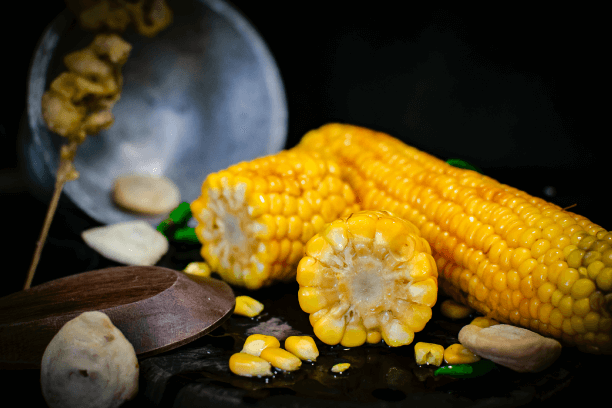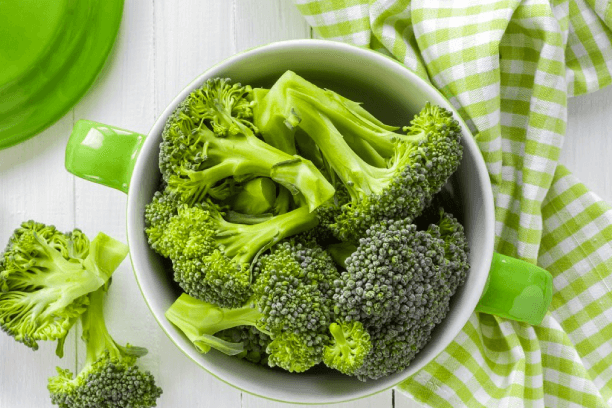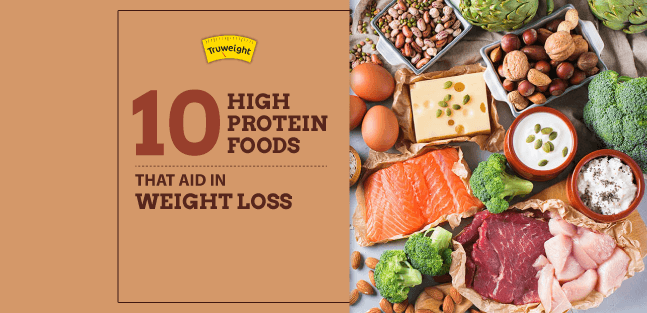Food & Nutrition, Health
Here Is How You Can Easily Include Healthy Protein Foods In Your Diet
Water being the most essential requirement of the human body, protein comes next as the main component of our cells.
Protein builds up and helps maintain various parts of the body including muscles, collagen, skin, hair, nails, haemoglobin, hormones, enzymes and antibodies.
Table of Contents:
- What Are Proteins Made of?
- Why is it Essential to Get Enough Protein?
- 10 High Protein Foods That Aid In Weight Loss
- Types of Proteins
- How Much Protein Does Your Body Need?
For muscles, proteins take care of the movement around your organs including your heart. For collagens, proteins provide strength and structure to tissues. For your skin, hair and nails, proteins form the main composition. In haemoglobin, proteins help in transporting oxygen around the body.
Their role in hormones is to act as your body’s chemical messenger.
Also proteins regulate your enzymes mechanism and facilitate chemical reactions that allow you to digest food, generate energy to contract muscles and regulate insulin production.
Proteins also play an important role in developing and maintaining your body’s immunity or antibodies.
What Are Proteins Made of?
Proteins consist of small building blocks known as amino acids, which are roughly 20 in type.
The 20 different amino acids used by the body to synthesize proteins are Alanine, arginine, asparagine, aspartic acid, cysteine, glutamic acid, glutamine, glycine, histidine, isoleucine, leucine, lysine, methionine, phenylalanine, proline, serine, threonine, tryptophan, tyrosine, and valine.
Amino acids are basically organic molecules that are made of carbon, hydrogen, oxygen, nitrogen, and sometimes sulfur.
The amino acids synthesize proteins and other important compounds in the human body, such as creatine, peptide hormones, and some neurotransmitters.
The size of the proteins vary with the number of amino acid blocks they consist of. Some proteins may contain just a few amino acids while others may contain several thousands of amino acids as their building blocks.
These amino acid blocks form chains and can fold up in different shapes resulting in unique 3D shaped proteins.
For example, keratin which essentially is the hair protein, forms long fibers while haemoglobin, the protein that transports oxygen around your body is spherical.
Why is it Essential to Get Enough Protein?
During the process of digestion, your body breaks down the protein you eat into individual amino acids and this forms up the plasma pool of amino acids, which is a reserve of amino acids circulating in your bloodstream.
Given that our bodies need proteins and amino acids to produce enzymes, hormones, neurotransmitters, and antibodies, if we do not have enough proteins in our body, our body will not be able to function well.
Protein helps in replacing worn out cells, transports various substances throughout the body, and aids in growth and repair.
Protein can also help increase the glucagon levels in the body, which controls body. When blood sugar levels go down, glucagon is released.
This leads to the liver breaking down stored glycogen into glucose for the body’s use. It can also help to liberate free fatty acids from adipose tissue.
10 High Protein Foods That Aid In Weight Loss
1. Black Beans
The Black beans are an excellent and inexpensive source of protein.
According to the National Nutrient Database one-half cup (86g) of cooked black beans contains approximately
| Energy | 114 kilocalories |
| Protein | 7.62 g |
| Fat | 0.46 g |
| Carbohydrate | 20.39 g |
| Fiber | 7.5 g |
| Sugars | 0.28 g |
| Calcium | 23 milligrams (mg) |
| Iron | 1.81 mg |
| Magnesium | 60 mg |
| Phosphorus | 120 mg |
| Potassium | 305 mg |
| Sodium | 1 mg |
| Zinc | 0.96 mg |
| Thiamin | 0.21 mg |
| Niacin | 0.434 mg |
| Folate | 128 msg |
| Vitamin K | 2.8 mg |
2. Corn

A Corn has about 15.6 g of protein per cup. Also, it contains a good amount of fiber and minerals, including calcium.
3. Salmon
A Salmon is a fatty fish, which is full of omega-3 fatty acids. Salmon is also an excellent source of protein and can help a person feel more satisfied at meals.
According to Food and Nutrition Research,
- “Amounts of lipids and n-3 PUFAs in serum, liver and skeletal muscle were similar between rats fed baked or raw salmon fillet. When compared to the control group, rats fed baked salmon had lower serum total and LDL cholesterol and higher serum triacylglycerol levels.
- Both raw and baked salmon groups had lower HDL cholesterol level when compared to control rats.
- In conclusion, baking as a preparation method does not alter protein and fat qualities of salmon fillets, and intake of baked and raw salmon fillets gave similar effects on lipids and n-3 PUFAs in serum and tissues from rats.”
4. Potatoes
The Potatoes (read not the fried version) are extremely healthy and are known to be good sources of nutrients, including protein.
One medium potato with the skin on contains approximately 4 g of protein.
According to Advances in Nutrition – An International Review Journal,
- “The white potato is also a concentrated source of vitamin C and potassium. Two of the nutrients in white potatoes, dietary fiber and potassium, have been designated as nutrients of concern in the 2010 Dietary Guidelines for Americans.
- Potatoes are often maligned in nutrition circles because of their suspected link to obesity, and popular potato foods often contain more fat calories than carbohydrate calories.
- Some food guides do not include potatoes in the vegetable group because of their association with high-fat diets. However, potatoes should be included in the vegetable group because they contribute critical nutrients.
- All white vegetables, including white potatoes, provide nutrients needed in the diet and deserve a prominent position in food guides.”
5. Broccoli

One cup of raw broccoli contains almost 2.6 g of protein along with a variety of nutrients such as folate and potassium.
6. Cauliflower
A Cauliflower has a lot of protein with very few calories. One cup of chopped cauliflower has 27 calories and 2 g of protein.
Heather Mangieri – a Pittsburgh-based registered dietitian and nutritionist, health author and spokesperson for the Academy of Nutrition and Dietetics says,
- “Despite its white color, cauliflower is a very versatile and vitamin-rich vegetable. It is a great source of vitamin C and folate and a good source of fiber and vitamin K. It is also rich in phytochemicals and antioxidants, two naturally occurring compounds thought to play a role in preventing chronic diseases.”
- In fact, cauliflower ranks among the top 25 powerhouse fruits and vegetables in the Centers for Disease Control and Prevention’s Aggregate Nutrient Density Index (ANDI), a scoring method that ranks foods based on their nutrient content per calorie.
7. Chinese Cabbage
The Chinese cabbage – more commonly known as bok choy, is full of protein and antioxidants.
According to the United States Department of Agriculture (USDA) National Nutrient Database, 1 cup of raw bok choy,
Weighing 70 grams (g) contains 9 calories, 1.05 g of protein, 1.53 g of carbohydrates, 0.7 g of dietary fiber, 0 g of cholesterol, 0.067 g of polyunsaturated fat, 74 mg of calcium, 0.56 mg of iron, 13 mg of magnesium, 26 mg of phosphorus, 176 mg of potassium, 46 mg of sodium, 0.13 mg of zinc, 31.5 mg of vitamin C, 46 micrograms (mcg) of folate, 156 mcg of vitamin A (RAE) and 31.9 mcg of vitamin K.
8. Eggs
The Eggs prove as an excellent source of protein, nutrients, and healthy fats. Eggs are filling and versatile in nature.
And Eggs are rich in cholesterol, protein , choline, biotin, vitamin A, antioxidants lutein and zeaxanthin.
According to Harvard T.H. Chan – School of Public Health,
- “Research on moderate egg consumption in two large prospective cohort studies (nearly 40,000 men and over 80,000 women) found that up to one egg per day is not associated with increased heart disease risk in healthy individuals.
- Eggs were previously associated with heart disease risk as a result of their high cholesterol content. However, a solid body of research shows that for most people, cholesterol in food has a smaller effect on blood levels of total cholesterol and harmful LDL cholesterol than does the mix of fats in the diet.”
9. Chicken Breast
A Chicken breast (read skinless) is a lean source of protein excellent for weight loss. A 136 g skinless chicken breast provides around 26 g of protein.
According to Food and Nutrition Research,
- “Consumption of poultry meat, as part of a vegetable-rich diet, is associated with a risk reduction of developing overweight and obesity, cardiovascular diseases, and type 2 diabetes mellitus.
- Also, white meat (and poultry in particular) is considered moderately protective or neutral on cancer risk. The relevance of poultry meat for humans also has been recognized by the UN Food and Agricultural Organization (FAO), who considers this widely available, relatively inexpensive food to be particularly useful in developing countries, where it can help to meet shortfalls in essential nutrients.
- Moreover, poultry meat consumption also contributes to the overall quality of the diet in specific ages and conditions (prior to conception, during pregnancy up to the end of breastfeeding, during growth, and in the geriatric age) and is suitable for those who have an increased need for calorie and protein compared to the general population.”
10. Quinoa
The Quinoa is considered an all round vegetarian source of proteins. It contains all 11 the amino acids needed to make a protein complete.
According to Harvard T.H. Chan – School of Public Health,
- “Though technically a seed, Quinoa is classified as a whole grain and is a good source of plant protein and fiber. One cup cooked provides about 8 grams of protein and 5 grams of fiber. Unlike some plant proteins, quinoa is a complete protein, meaning that it contains all nine essential amino acids that our bodies cannot make on their own.
- Quinoa is also naturally gluten-free and can be eaten safely if one has gluten intolerance such as celiac disease.
- Quinoa is rich in manganese, phosphorus, magnesium, folate and thiamine (B1).”
Types of Proteins
| Complete Proteins | These foods contain all the essential amino acid and are mostly found in animal foods like meat, dairy and eggs. |
| Incomplete Proteins | These foods contain at least one essential amino acid, so there is a lack of balance in the proteins. Plant foods, such as peas, beans, and grains mostly contain incomplete protein. |
| Complementary Proteins | These refer to two or more foods containing incomplete proteins that people can combine to supply complete protein. Examples, rice and beans or bread with peanut butter. |
How Much Protein Does Your Body Need?
There are various factors that determine the amount of proteins required by your body, the level of physical activity being one of them.
The basic recommendation for protein intake is 0.8 grams per kilogram (or around 0.36 g per pound) of body mass in healthy adults.
For people taking up high intensity training, the protein requirement goes up to about 1.4-2.0 g/kg (or around 0.64-0.9 g/lb) of body mass.
The maximum amount of protein we need to consume through the day does not go beyond 1.4 – 2.0 g/kg.
Now this estimation of protein requirement is just to survive – basically preventing deficiencies and ensuring a baseline of protein synthesis.
For other optimal functioning like good immune function, metabolism, satiety, weight management and performance, we need more proteins in various forms.
According to Harvard Health Publishing – Harvard Medical School, “For a relatively active adult, eating enough protein to meet the RDA would supply as little as 10% of his or her total daily calories.
In comparison, the average American consumes around 16% of his or her daily calories in the form of protein, from both plant and animal sources.
The Protein Summit reports in AJCN argue that 16% is anything but excessive. In fact, the reports suggest that Americans may eat too little protein, not too much.
The potential benefits of higher protein intake, these researchers argue, include preserving muscle strength despite aging and maintaining a lean, fat-burning physique.
Some studies described in the summit reports suggest that protein is more effective if you space it out over the day’s meals and snacks, rather than loading up at dinner like many Americans do.
Based on the totality of the research presented at the summit, Rodriguez estimates that taking in up to twice the RDA of protein “is a safe and good range to aim for.”
This equates roughly to 15% to 25% of total daily calories, although it could be above or below this range depending on your age, sex, and activity level.”
Here was everything we had to tell you about proteins, why they are essential for your body and how you can easily include them in your daily diet.
For more insight on nutrition, weight loss and health, talk to our expert Possible Nutritionist today. The first consultation is on us. Click here to avail.

A Healthy life stile is the best choice! congratulations for this blog and also is very encouraging weight loss experience, it it nice to follow this recipe too..
HI Adriana! We appreciate your feed back on this article. Keep following our blog to know more health information.